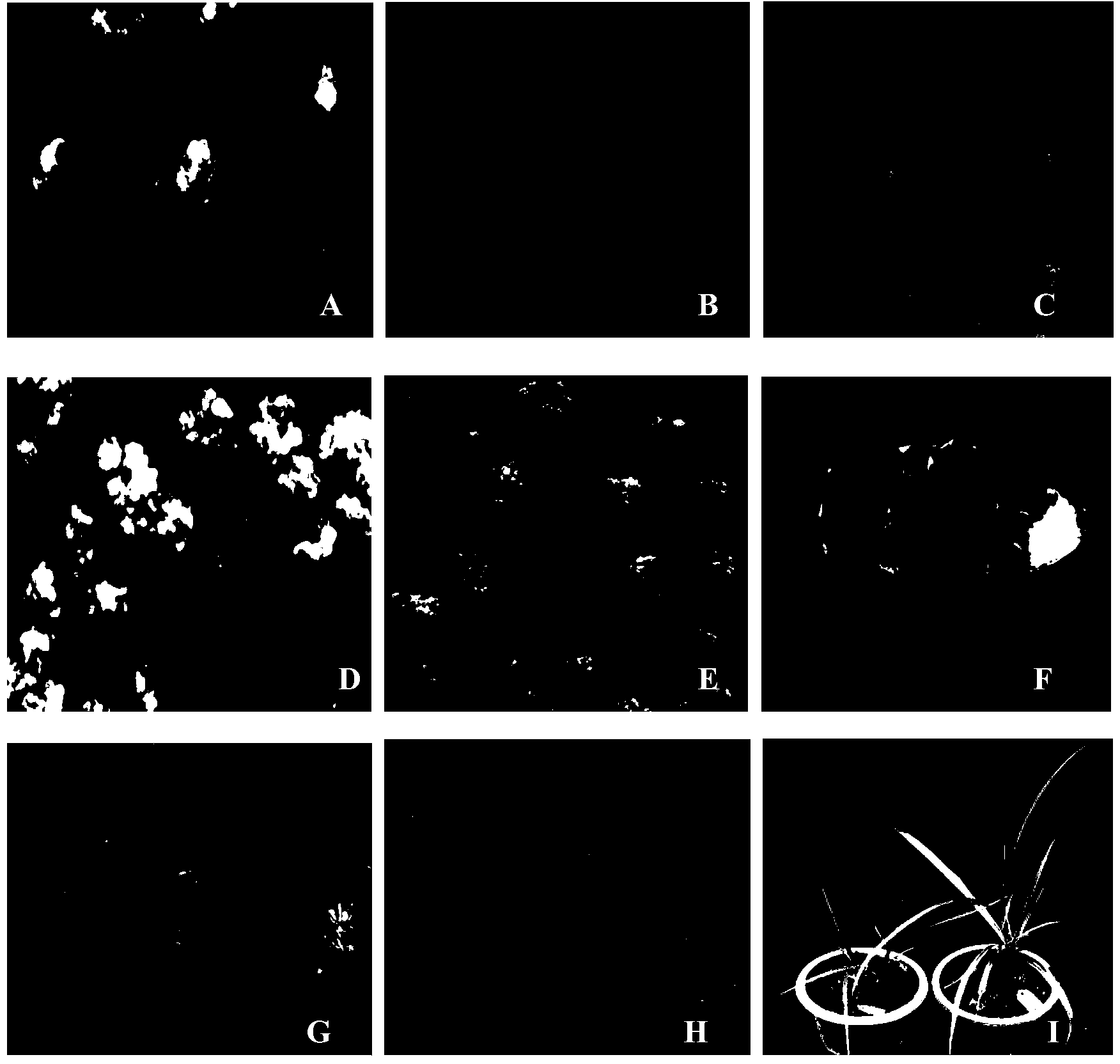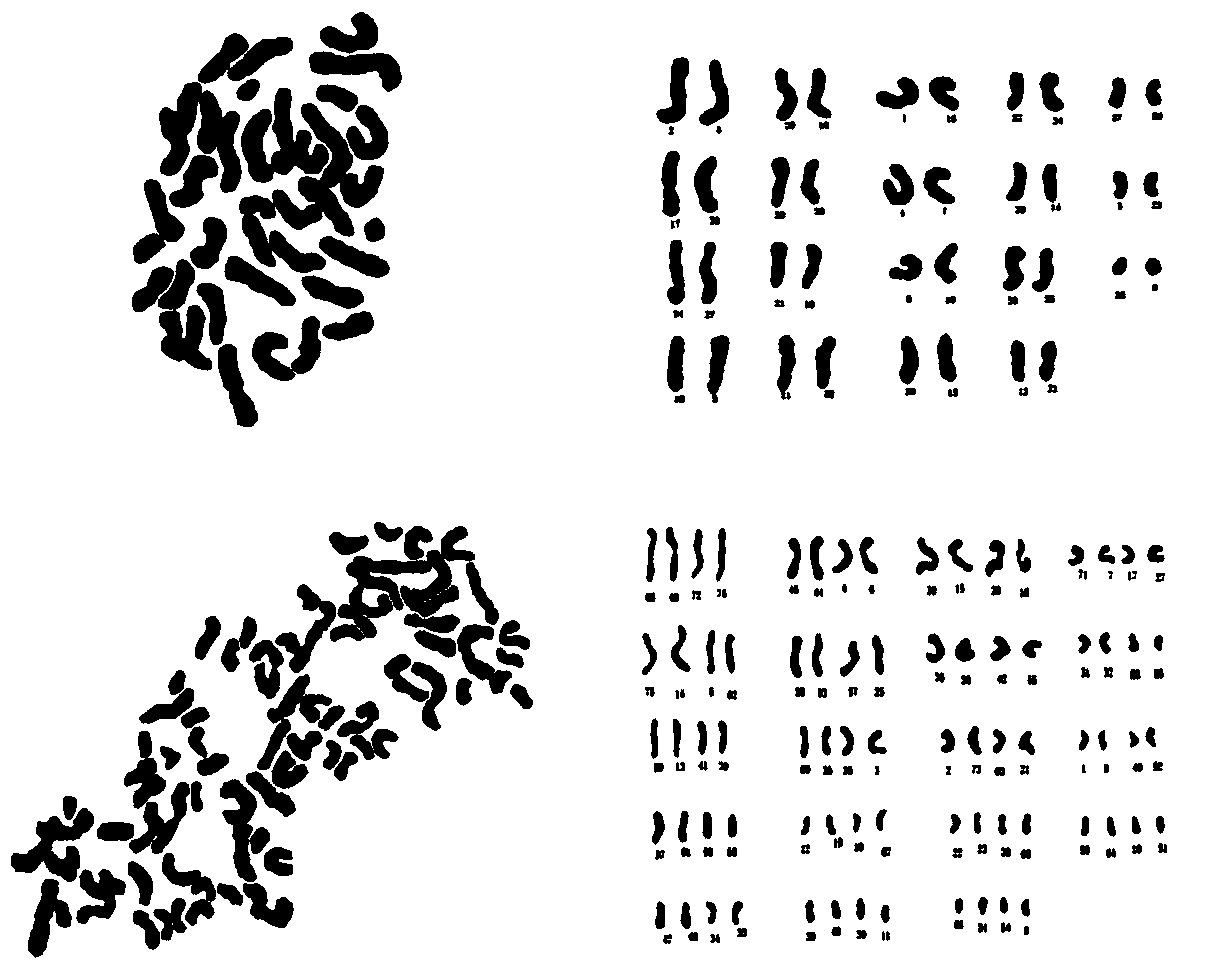Method for inducing polyploid miscanthus sinensis
A technology of polyploidy and body awn, applied in the field of plant cytogenetics, can solve the problems of high price, high callus toxicity, and increased mutagenesis cost, and achieve the effect of low toxicity, high induction rate and low cost
- Summary
- Abstract
- Description
- Claims
- Application Information
AI Technical Summary
Problems solved by technology
Method used
Image
Examples
Embodiment 1
[0031] Material: Miscanthus (M.sinensis) 02178, collected from Huaihua, Hunan, and preserved in the Miscanth plant resource nursery of Hunan Agricultural University.
[0032] 1. Preparation of mutagenic materials: select the induced compact embryogenic callus with bud points, and collect them in a 50ml Erlenmeyer flask for later use;
[0033] 2. Mutation of polyploid: soak embryogenic callus in mutagen, mutagen components include 25g / L mannitol, 1.02mM Ca 2+ and 10 μM asulphin, the solvent is water; the treatment temperature is 5°C, the treatment is 15 minutes, and 5 repetitions are set; the callus is taken out, inoculated into hormone-free basic medium, cultured in the dark at 5°C, and treated for 36 hours.
[0034] 3. Cluster bud induction or proliferation: Take out the treated callus, wash it with 25g / L mannitol solution sterilized three times, once for 2 minutes; after cleaning, absorb it with sterilized filter paper Dry the residual solution; transfer the callus to the d...
Embodiment 2
[0038] Material: Miscanthus (M.sinensis) 00051, collected from Leshan, Sichuan, and preserved in the Miscanth plant resource nursery of Hunan Agricultural University.
[0039] 1. Preparation of mutagenic materials: select the induced compact embryogenic callus with bud points, and collect them in a 50ml Erlenmeyer flask for later use;
[0040] 2. Mutation of polyploid: soak embryogenic callus in mutagen, mutagen components include 20g / L mannitol, 1.02mM Ca 2+ and 5 μM nocodazole, the solvent is water; the treatment temperature is 15°C, the treatment is 20 minutes, and 5 repetitions are set; the callus is taken out, inoculated into hormone-free basic medium, cultured in the dark at 15°C, and treated for 48 hours.
[0041] 3. Cluster bud induction or proliferation: Take out the treated callus, wash it with 20g / L mannitol solution sterilized 5 times, once for 1 minute; after cleaning, absorb it with sterilized filter paper Dry the residual solution; transfer the callus to the di...
Embodiment 3
[0045] Material: Miscanthus (M.sinensis) 02178, collected from Huaihua, Hunan, and preserved in the Miscanth plant resource nursery of Hunan Agricultural University.
[0046] 1. Preparation of mutagenic materials: select the induced compact embryogenic callus with bud points, and collect them in a 50ml Erlenmeyer flask for later use;
[0047] 2. Mutation of polyploid: soak embryogenic callus in mutagen, mutagen components include 25g / L mannitol, 2.99mM Ca 2+ and 5 μM nocodazole, the solvent is water; the treatment temperature is 25°C, the treatment is 15min, and 5 repetitions are set; the callus is taken out, inoculated into hormone-free basic medium, cultured in the dark at 25°C, and treated for 36h.
[0048] 3. Cluster bud induction or proliferation: Take out the treated callus, wash it with 25g / L mannitol solution sterilized three times, once for 2 minutes; after cleaning, absorb it with sterilized filter paper Dry the residual solution; transfer the callus to the differenti...
PUM
 Login to View More
Login to View More Abstract
Description
Claims
Application Information
 Login to View More
Login to View More - R&D
- Intellectual Property
- Life Sciences
- Materials
- Tech Scout
- Unparalleled Data Quality
- Higher Quality Content
- 60% Fewer Hallucinations
Browse by: Latest US Patents, China's latest patents, Technical Efficacy Thesaurus, Application Domain, Technology Topic, Popular Technical Reports.
© 2025 PatSnap. All rights reserved.Legal|Privacy policy|Modern Slavery Act Transparency Statement|Sitemap|About US| Contact US: help@patsnap.com


